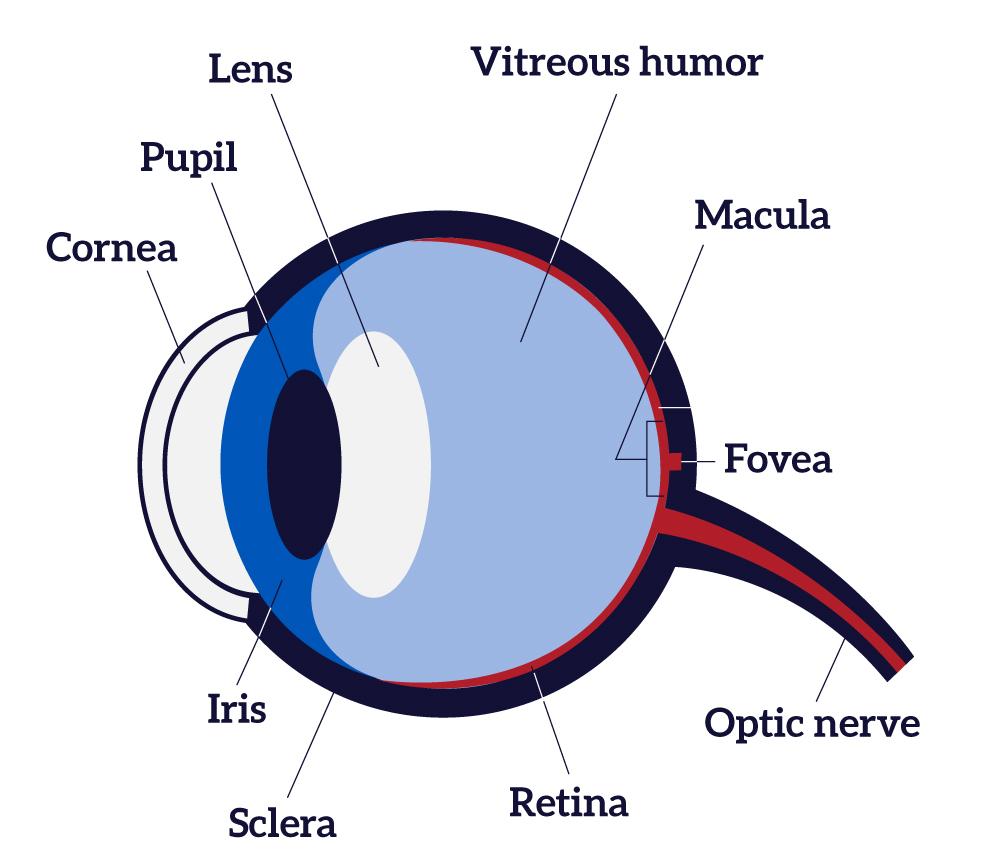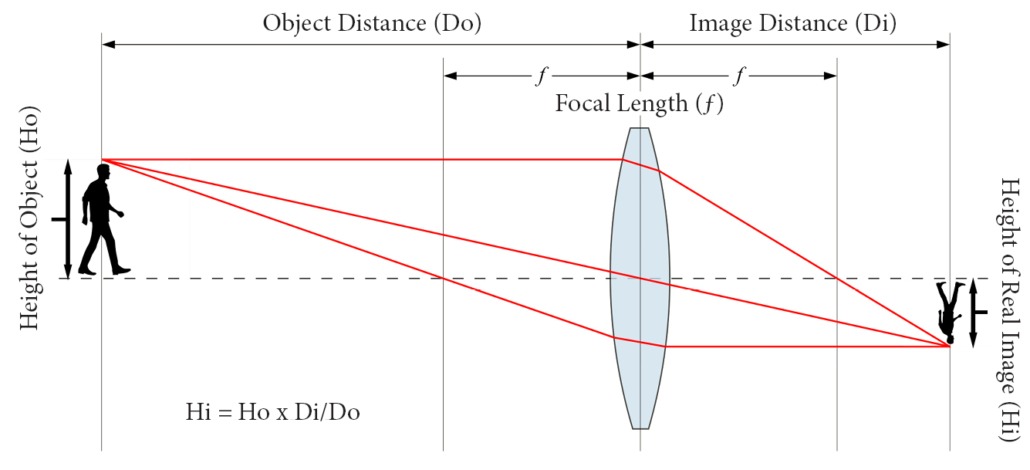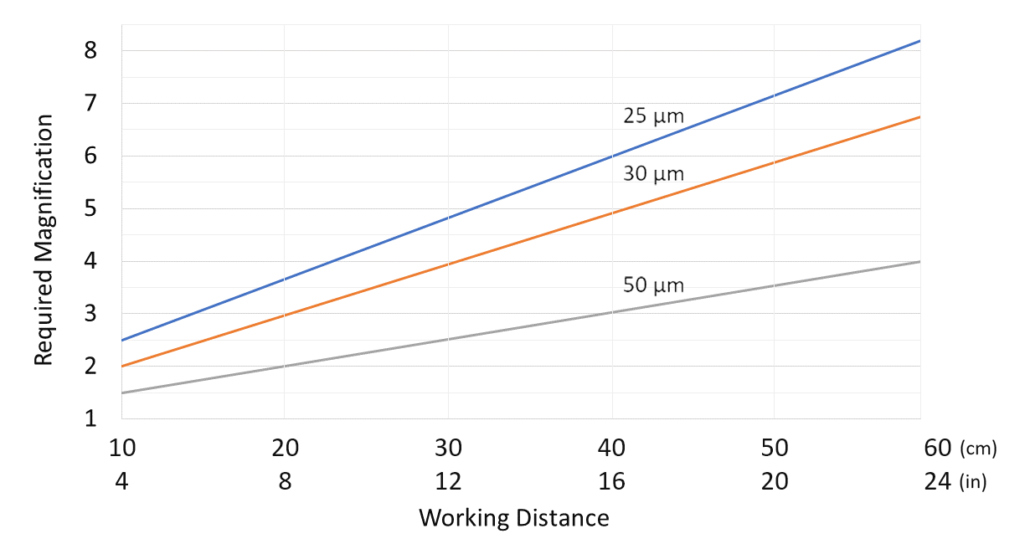Zoom Loupes VS Multiple Pairs with Different Magnification Powers
ErgoPractice News – December 2020
Orascoptic EyeZoom VS SurgiTel Prism Loupes
Several multiple magnification designs have been considered by SurgiTel and other companies over many years. You may read our August 2017 ErgoPractice eNews article on “Multiple Magnification Loupes: 1987 to Today” for more information.1 It is noted that our survey indicates most people do not go back in power.
Recently, our customers have asked us about Orascoptic’s EyeZoom Loupes. Zoom loupes are an optical imaging device with multiple magnification powers like zoom microscopes, but there is a significant difference between zoom loupes and zoom microscopes. In this month’s article, we will review inherent issues of zoom loupes which are reasons SurgiTel does not offer zoom loupes. Before we review inherent issues of zoom loupes and alternative options, let’s review how eyes work and the roles of vision-aid devices such as reading glasses, loupes, and microscopes.

Figure 1 – Anatomy of the Human Eye. Source: National Eye Institute.
The Eye as an Optical Instrument
The eye is a simple imaging optical system with a single lens and variable focal distance (Figure 1). Without using a vision-aid device, we can see better by simply getting closer to objects because the image size projected onto the retina will become larger as the distance between objects and eyes decreases.2 Figure 2 is a simple model of the eye lens as an optical imaging system. The height of a real image projected onto the retina is given by a simple formula shown in Figure 2 (Hi = Ho x Di/Do). Since image distance (Di) is fixed, the image height will be shorter if the object distance (Do) increases. In this case, “real image” is the projected image on to your retina.3 Young eyes can focus on very close objects, but older eyes cannot focus on close objects due to the loss of accommodation ability of eyes as an aging effect (presbyopia) and thus we need reading glasses as we get older.

Figure 2 – Size of the projected image on the retina is dependent on object distance.
Roles of Vision-Aid Devices
There are three types of vision-aid devices: diopter lenses (called diopter loupes or reading glasses), loupes (often called surgical telescopes), and microscopes. Diopter lenses help users focus on closer objects, increasing the image size projected onto the retina with reduced distance.
Loupes and microscopes help magnify the image size formed on the retina without changing the distance between object and eyes, which is called the working distance. The working distance of microscopes is fixed for all users, but the working distance of custom loupes varies according to users’ working postures. With microscopes, all users will have the same visual experience, but with loupes, all users cannot have the same visual experience unless their working distances are the same. Therefore, the benefits of microscopes are not transferrable to loupes.
Working Distance of Loupes and Magnification Requirement

Figure 3 – Required magnification to see these detail levels.
To maintain the same image size projected onto the retina, the magnification power of loupes must be increased if the working distance increases. Figure 3 shows the minimum magnification power required for clinical procedures as a function of working distance.4,5 When dental professionals started to use loupes in the 1980s, the typical working distances were 12” to 14” and 2.5x was considered as the standard minimum magnification power of loupes which allows users to see 50µm details easily. Since then, the working distance has increased because of ergonomic education. If your working distance is 16”(or 18” or 20” or 22”), the minimum magnification power should be about 3.0x (or 3.5x or 4.0x or 4.5x).
Three Inherent Issues of Zoom Loupes
There are several technical and practical issues. The first issue of Zoom Loupes is that loupes cannot help all users have the same visual experience unless the working distance of loupes is fixed. Loupe users, however, certainly do not have all the same working distance! If the EyeZoom provides the same working distance for all users, all users can have the same experience, but then the EyeZoom would not be a custom loupe. Loupes cannot be a “one-size-fits-all” design like microscopes because loupes must be built with custom working distance. Thus, a 3/4/5 magnification combination in Orascoptic EyeZoom loupes may be applicable to clinicians whose working distance is less than 16,” but a taller person whose working distance is longer than 16” will have a reduced experience because of the working distance effect.2
The second issue is that field sizes of lower magnification powers will be compromised. They will be less than the same field sizes in a single magnification loupe because the length of zoom loupe optics is determined by the highest magnification power. With EyeZoom loupes, the performance is limited because the lower magnification is using the same body as the higher magnification. The performance of 3.0x and 4.0x magnifications is limited due to being stuck together with the 5.0x magnification.
The third issue is that zoom loupes are heavier than single-power loupes. Although users do not change magnification powers during most procedures, they have to carry the weight all the time. Good loupe design involves minimizing weight at every point. Additional weight on loupes may not be very noticeable during a demo, but over long cases, the user will notice.
Multiple Sets of Loupes with Different Magnification Powers as Alternative Option
Single magnification loupes can be designed for the best performance – optimal magnification, maximum field size, lowest weight, and best alignment. Therefore, using multiple sets of loupes with different magnification powers is a far better option than zoom loupes. This may sound like a large cost, but many clinicians choose this option because this gives them a backup. Backups are very important because when one loupe needs servicing, those with a backup experience no downtime or lost revenue or performance!
In addition, most customers who have purchased EyeZoom loupes have reported to us they find themselves simply using the highest magnification and not using the lower magnifications at all. It is a shame because they have paid the high costs, have reduced performance, and carry greater weight for features they are not using.
SurgiTel offers prism loupes with 3.5x to 8.0x from which clinicians can make any combination of magnifications. SurgiTel can make prism loupes with all frame types, including Oakley frames which offer excellent eye-protection and comfort.
SurgiTel prism loupes have a unique feature not available with other brand prism loupes which allow users to change their working distance by interchanging working distance caps. With the reduced working distance, we can see details of objects better. There is more information about this available online at www.surgitel.com/3-uses-of-surgitel-working-distance-caps, or you can contact your local rep for a demo at www.SurgiTel.com/MyRep.
Free Evaluation for Loupes and LED Headlight?
What are the right magnifications for your procedures? What level of detail do you need? Do you need multiple magnification loupes? What are the best options for you? Do you want to practice pain-free? Do you protect your eyes from blue-tinted LED lights?
To receive a personalized evaluation of your current solutions and needs, contact your local SurgiTel representative at www.SurgiTel.com/MyRep.
References:
- Chang, BJ, Multiple Magnification Loupes: 1987 to Today, ErgoPractice News, August 2017. surgitel.com/multiple-magnification-loupes-1987-to-today
- Chang, BJ, 3 Uses of SurgiTel Working Distance Caps, ErgoPractice News, September 2016. surgitel.com/3-uses-of-surgitel-working-distance-caps
- “Lens.” Wikipedia, Wikimedia Foundation, 22 December 2020, https://en.wikipedia.org/wiki/Lens
- Chang, B.J. “Ergonomic Benefits of Surgical Telescope Systems: Selection Guidelines.” Journal of the California Dental Association30, no. 2, February 2002.
- Chang, B.J. “Chapter 24, Role of Advanced Surgical Telescopes and Illumination Systems for Clinical Procedures.” Essay. In Dental Implants: The Art and Science, 495–505. New York, NY: W.B. Saunders Company, A Harcourt Health Sciences Company, 2002.



